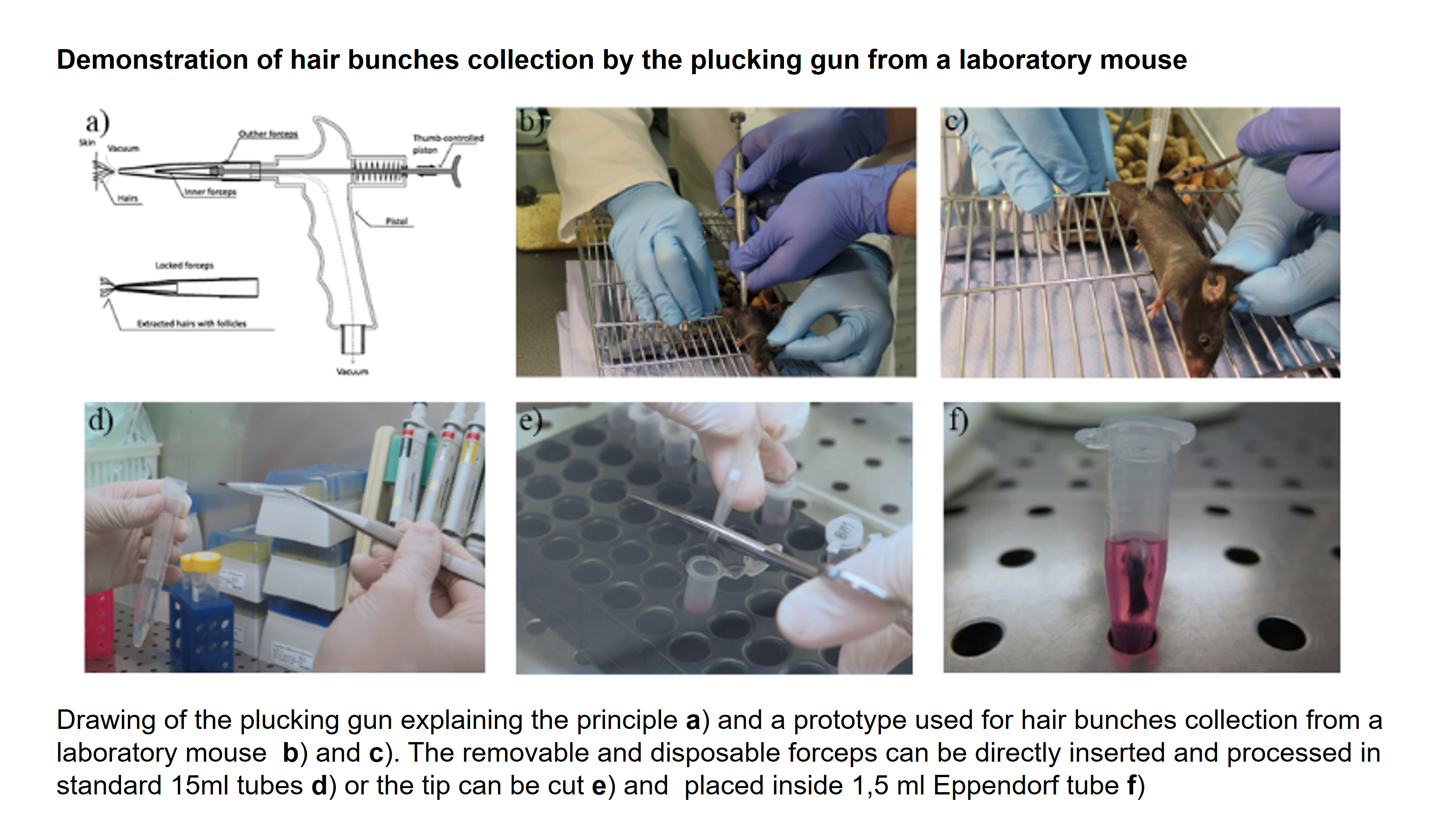Method and device for non-invasive collection of hair samples including follicular cells
INTRODUCTION:
Collection of hair from the skin of mammals including humans introduces a biological sample of extraordinary properties. The plugged hair is a complex specimen which includes apart from the hair body also the live follicular cells surrounding the hair root allowing subsequent examinations with great potential in basic and applied science.
TECHNOLOGY (INVENTION) DESCRIPTION:
Here is presented a method and the device for non-invasive and easy collection of multiple hairs from human or furred mammals for various experimental and analytical purposes employing the follicular cells accompanying the hair roots. The invention is based on a patented instrument made of the vacuum powered plucking gun and disposable plastic forceps (IP protected in EU and USA). Such setup is particularly practical for various laboratory techniques gaining the information from the follicular cells including immunohistochemistry, proteomics, and analytics based on isolated RNA and DNA. Individual follicular cells can be also isolated from the collected samples and used for ex-vivo expositions and also for the derivation of live cell cultures.
ADVANTAGES OVER EXISTING SOLUTIONS:
Solutions based on the invasive methods of hair collection involve excising the tissue including the root of the hair and further processing of the extracted tissue. But invasive surgery always poses various risks and serious discomfort. Existing non-invasive methods involve extracting the hair with tweezers. Such procedures pose multiple logistic scrutinies making such sample collection impractical and thus rarely used. The presented instrument and method allow multiple hairs to be collected fast and non-invasively. The collected samples are easy to manipulate and processed. The setup is compatible with specific conditions like aseptic environments, animal labs and also field conditions.
DEVELOPMENT STATUS (STAGE):
An existing prototype tested for genotyping, biodosimetry, organism fitness assessment, and cell cultures derivation
PUBLICATIONS:
The manuscript describing the method and its applications in humans and mice is in preparation.
IP PROTECTION STATUS:
The device and method is patent protected in EU and USA (see for details WO 2014/086324, EP 2928382, US 14/649785)
TECHNOLOGY / IP OWNERS :
IP owner is the University of Palacky in Olomouc, Czech Republic.

More information
More information is available upon signing a CDA / NDA (Confidential Disclosure Agreement / Non-Disclosure Agreement)